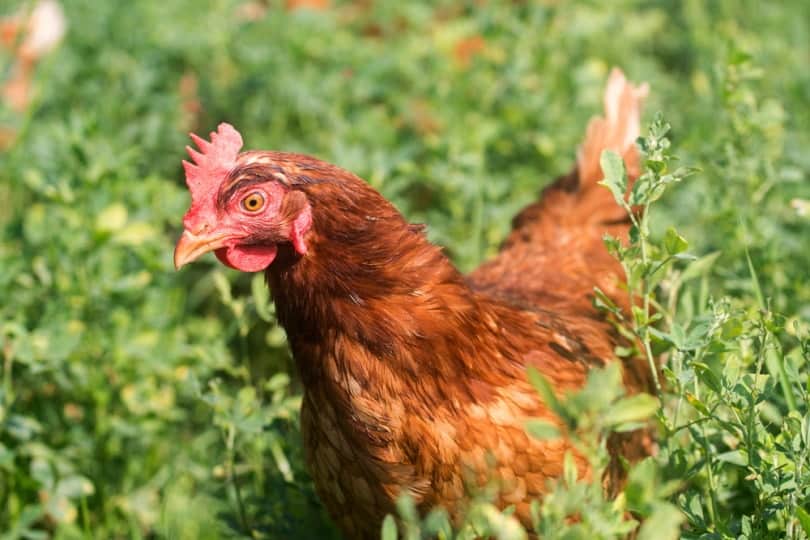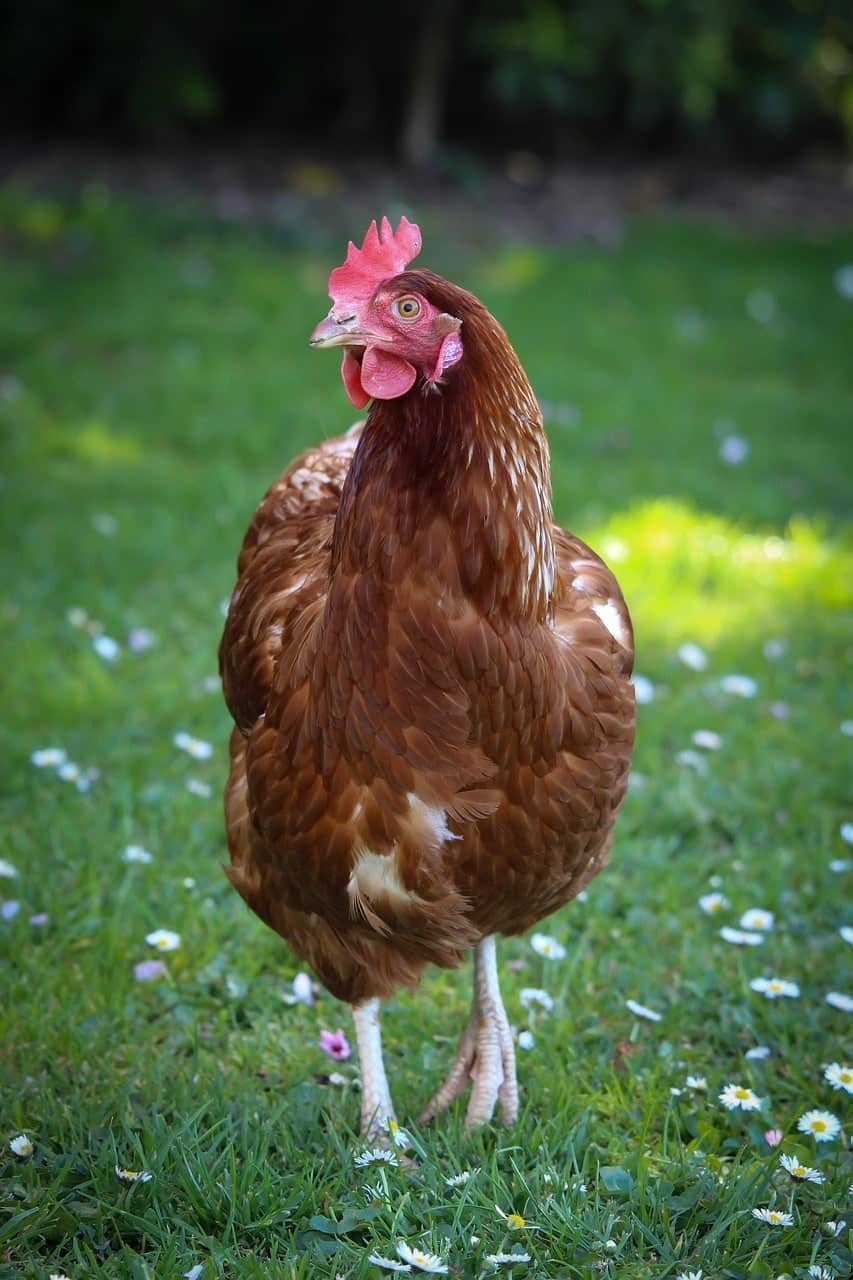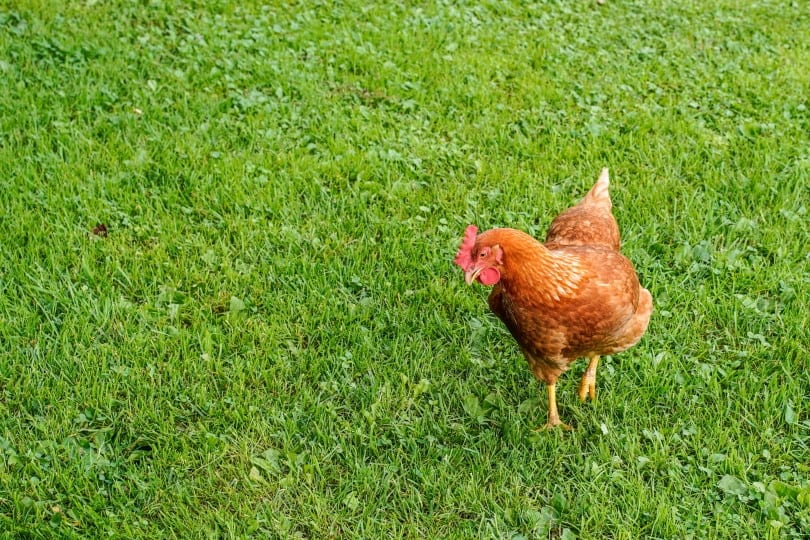Keeping backyard chickens is increasing in popularity, which has led to a rise in the availability of hardy chicken breeds. Many people seek out high producers for their backyard farms, and the Cinnamon Queen chicken was created due to this demand.
This hybrid breed of chicken is a high egg layer and is known to be hardy, but it also has its own issues.
Here’s an introduction to the Cinnamon Queen chicken breed.

Quick Facts About Cinnamon Queen Chickens

| Breed Name: | Cinnamon Queen |
| Place of Origin: | United States |
| Uses: | Egg laying, meat |
| Rooster (Male) Size: | 7.5 pounds |
| Hen (Female) Size: | 5.5 pounds |
| Color: | Reddish-brown, white |
| Lifespan: | 3–5 years |
| Climate Tolerance: | Cold hardy |
| Care Level: | Easy to moderate |
| Production: | High |
Cinnamon Queen Chickens Origins
The Cinnamon Queen is a chicken breed that originated from crossing a Rhode Island Red rooster to a Rhode Island White hen. The breed is still in development and is not currently accepted by the American Poultry Association. This hybrid breed began development in the modern era to help fill the need for heavy, cold hardy chickens that are high egg producers.

Cinnamon Queen Chickens Characteristics
These chickens are widely known to be sweet chickens that are easy to deal with. While hens may become broody, they are far less broody than a lot of other chicken breeds and hybrids. They are known to be good mothers, but they are overall quite docile birds that aren’t opposed to being handled by people.
The Cinnamon Queen is considered a sex-linked chicken hybrid, which means that it has sex-linked traits. Males are white upon hatching, while females are reddish-brown upon hatching. However, if a Cinnamon Queen is bred to another Cinnamon Queen, they are unlikely to “breed true,” meaning that the offspring will not be sexable upon hatching. In order to guarantee males and females will be true to the current hybrid standard, you would have to breed your male Rhode Island Red to your female Rhode Island White.
Since they are high egg producers, these chickens do require nutrient-dense food to ensure they stay healthy and maintain production. They need a high-protein feed, as well as a healthy and varied diet that ensures their needs are met.

Uses
This breed began development as an answer to people looking for high egg layers. Cinnamon Queen hens will lay anywhere from 250–300 eggs per year, and they begin laying eggs earlier than many other chickens, with some hens laying as young as 16 weeks. As they age, egg production will decrease, with most hens having a significant drop in egg production after 2 years of age.
These chickens are also quite heavy and well-muscled, which makes them suitable for meat production as well.
Appearance & Varieties
When it comes to Cinnamon Queen chickens, they come in a very specific appearance. Hens are reddish-brown, giving the breed its name. Roosters are typically fully white or primarily white with small amounts of reddish-brown feathers. They are heavy chickens with stocky, strong bodies.
Population, Distribution & Habitat
These chickens are primarily located in the United States due to their origins. This is also partly because they are not a recognized breed by any livestock governing body. Since they are a relatively new breed, they have not traveled far, but they are relatively easy to acquire within the United States due to their popularity as egg layers.

Are Cinnamon Queen Chickens Good for Small-Scale Farming?
Cinnamon Queen chickens are ideal for small-scale farming due to their use as egg layers and meat birds, as well as their docile and friendly nature. However, these chickens may have shorter lifespans than many other chickens, often only living 3–5 years. Their egg production also starts dropping off after 2 years of age, so they may not be suitable if you expect long-term egg production or long lifespans.
Featured Image Credit: Kathy D. Reasor, Shutterstock
